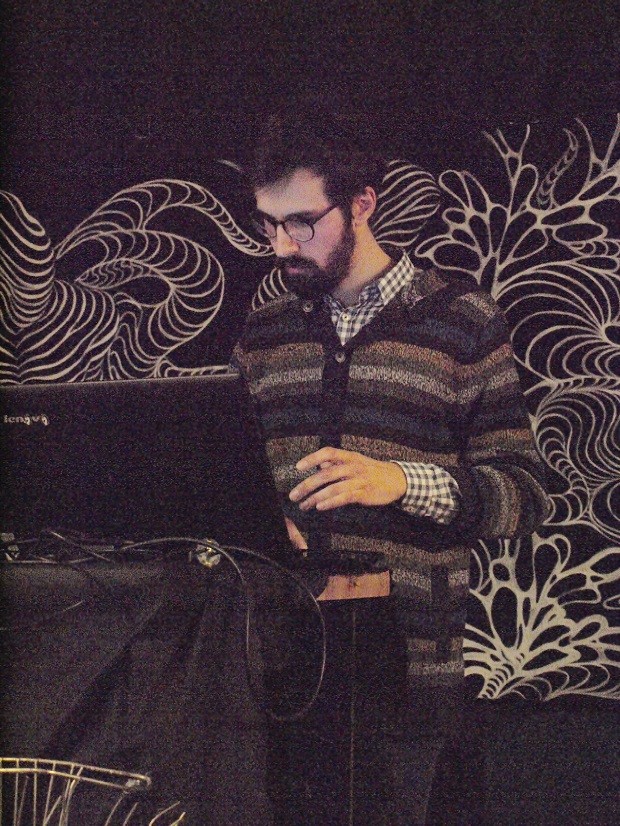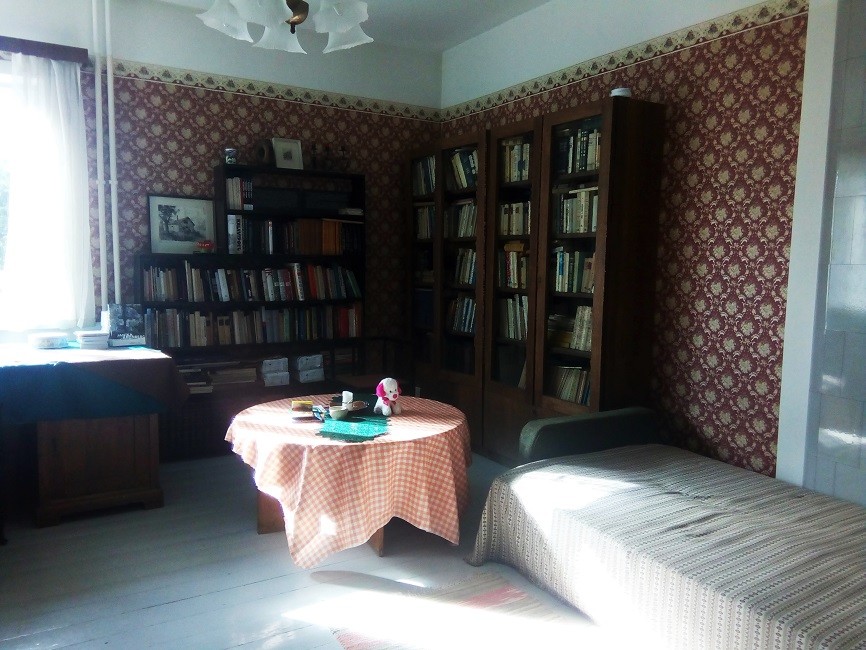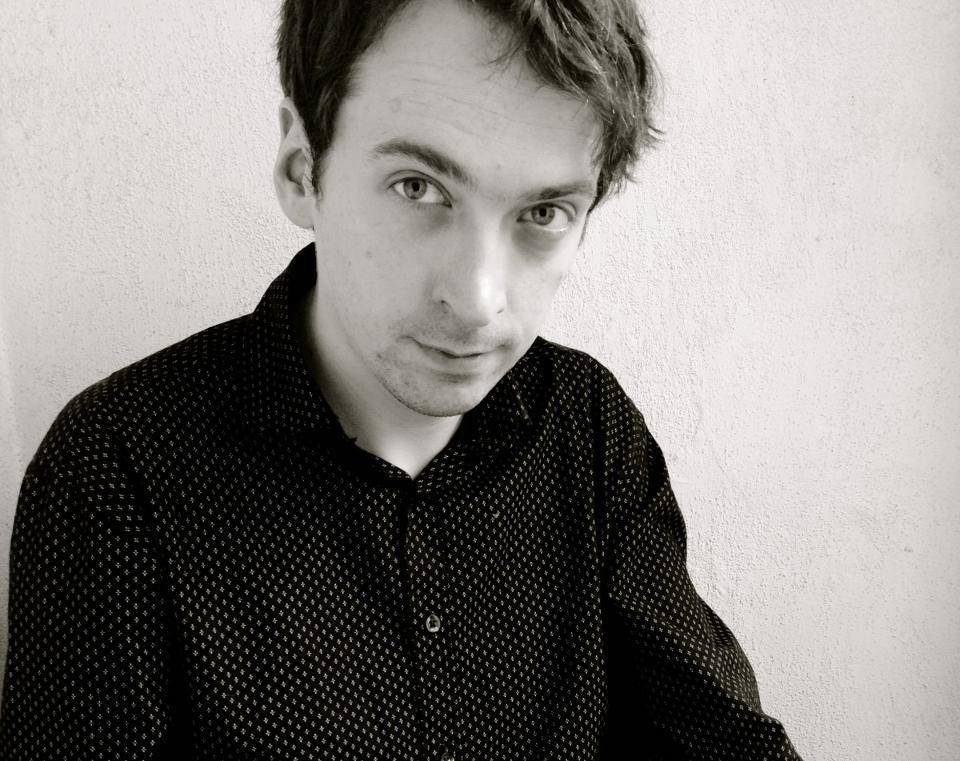Edith Soosaar interviews Marja Unt, the coordinator of the first Estonian public writer-in-residence programme in Tartu, that gives international writers and translators the chance to exchange experiences with Estonian writers.
The Writer in Residency programme, located in Tartu, the Estonian town of literature, hosts international writers and translators with the aim of providing an inspiring environment to work and give the opportunity to exchange experiences and communicate with Estonian writers. We asked Unt about how the residence was started, about the residency requirements and the selection process.
The writers residency at the Ristikivi (Karl Ristikivi was an Estonian author – editor) museum is the first and so far the only such programme in Estonia. Could you tell us about the birth of the Ristikivi writers’ retreat? How did it start? What came first, the place or the idea?
The idea that Tartu as a town with a rich cultural heritage and an inspiring environment should have an international residency programme for writers had been discussed for a while in the local literary circles. After Tartu was designated the UNESCO Creative City of Literature, it seemed logical to launch the residency programme as part of the town’s action plan as a city of literature.
Especially since our sister cities in the network, Prague and Krakow, already had the experience and good models we could adapt. The residency programme was discussed in the city of literature workgroup of which the chairman of the Karl Ristikivi Society, Janika Kronberg, is a member, so the group concluded that Ristikivi’s house in the Tähtvere district would be the perfect place to accommodate the residents.
Is it a short-term project – to run along with the UNESCO City of Literature – or will the residency continue?
As the UNESCO City of Literature is not a project but a permanent status and membership in an expanding international network, the residency programme, as part of our strategy, is a long-term measure. Naturally, the regularity and the developments of the programme also depend on the funding.
What are the costs related to the retreat? Where does the money come from?
The main costs are related to scholarships, travel compensation and the rent we pay to the Ristikivi Society so that it can keep the house in good living conditions. Most of the funding comes from the Tartu City Government, but we have been and hope to be supported in the future by the ministry of culture and the Estonian Cultural Endowment.
Selection
How many applications were submitted for the autumn-winter residency programme this year?
This autumn, we received 21 applications from writers and translators from different countries across the world.
Do you get repeat applications from authors who haven’t been picked yet?
Yes, some writers and translators have applied more than once and this is something we encourage. Since we can only take one resident at a time, not getting selected does not mean the committee is not interested in the applicant. Since there are also many new applicants during every call, the general picture is always very different, and it is not possible to guarantee that re-applying would result in being selected.
How are the authors for the writer’s residency selected among the applicants? How many people decide and how is each author’s background evaluated?
The authors are picked by a committee of four people – the representatives of the Tartu City of Literature Office (the Estonian Literary Society), the Tartu Department of the Estonian Writers Union, the Estonian Literary Museum and the Karl Ristikivi Society. As it is characteristic to most decisions related to arts and creativity, the selection is not easy – we consider many aspects, the background and the sample work sent to us as well as the motivation letter and the plans for the residency.
While evaluating the application, we also keep in mind that in addition to offering a creative retreat, the residency programme also aims to increase cultural communication and build stronger links between different literatures and literary scenes – therefore, while reading the application, among other things we also try to imagine which of the candidates could better connect with the local cultural environment and would gain the most from it.
Is there any specific focus when picking the writer for the residency? For example, is preference given to young authors to help them along, or are the more established/best known/most achieved authors preferred?
We have not set a specific focus and try to keep the programme as flexible as possible so that we could welcome very different authors in Tartu. The applicants, however, need to meet the criteria of the programme, including at least one published book (fiction or non-fiction), screenplay, theatre script or a translation from Estonian into another language.
Will the authors know why one or another of them was selected or not selected?
As there are so many factors at play during the selection process, it would be very difficult to clearly list the reasons why an applicant was not selected (during the respective call). However, after we have selected the next resident, the committee gives a short commentary for the press release about the selected applicant.
Expectations
What kind of facilities will the resident author have for their use? It is my understanding that there is an apartment at the Ristikivi museum?
The residency programme offers free accommodation in the house of former Ristikivi Museum. The museum itself was closed in 2007; the rooms, however, are still managed by the Karl Ristikivi Society and are used as a short-term rental space for writers, translators and scholars. The apartment – the whole first floor of a two-story house – is quite spacious, consisting of a kitchen with all basic facilities, a bathroom, a living room and a bedroom. There is gas heating and the place also has a good internet connection.
How much do you “babysit” the writer during the residency? Do they get keys, a map and a five-minute walkaround or is there a more social side involved?
As we appreciate the involvement in the local cultural scene, a personal contact person/project manager is assigned to help the resident with both everyday issues, show them the city and introduce the local people. Naturally, the contact person’s task is also finding a balance – making sure where advice and help are needed while not suffocating the guest with recommendations and information. The contact person also assists our office in organising interviews and events with the resident.
One of the conditions for applying is the willingness to participate in local culture/literary life. How have the writers so far been “used”?
Participation is encouraged on both a formal and informal level. We cooperate with the two biggest literary events in Tartu – the interdisciplinary festival, Crazy Tartu, taking place in November and the Tartu International Literary Festival Prima Vista, which takes place in May. Although this is not an obligation, we always offer the resident the opportunity to perform at one of the festivals.
 We organise at least one solo event during the stay, the form and content (a reading, a discussion, a performance) depending on the works, the creative profile and the preferences of the resident, and there can be several other ways the resident can be involved in the local cultural programming as well as discussions in the media.
We organise at least one solo event during the stay, the form and content (a reading, a discussion, a performance) depending on the works, the creative profile and the preferences of the resident, and there can be several other ways the resident can be involved in the local cultural programming as well as discussions in the media.
The first resident, Andrej Tomažin from Slovenia, did a memorable performance at Crazy Tartu 2017, had a discussion night at the literary salon of the bookshop Utoopia and gave interviews.
The writer and cultural critic, Darran Anderson from Ireland, whom we hosted this spring, gave a speech at the thematic show of Prima Vista, had a public discussion night and participated in a panel discussion during the vision day, Escape Room to the Future, organised as part of the preparations of Tartu 2024 for European Capital of Culture candidacy.
In addition to the public events, the more informal discussions, meeting the local people and just attending events are ways of participation that can sometimes have even a bigger long-term impact.
The future
For now, there are two residency periods per year – any plans for expanding? Making it more frequent, having more than one person at a time from different fields to create synergy?
The interest in organising residencies in Tartu seems to be growing in different fields of art. As our programme is connected to the aims of Tartu as a town of literature, it will stay focused on verbal arts.
Naturally, we would be thrilled if we could offer more – have more than one resident at a time, announce the programme more than twice a year, offer a specific program for cultural journalists and so on – but at present, the possibilities are limited by funding and the human resources of our office. Which, of course, might change in the future. Should new residency programmes be opened in the town connected to other fields of art, I’m sure there will be opportunities for cooperation.
How are you pleased with the results so far? Do you feel the programme fills its intended purpose? Is it even possible to evaluate or measure the success of the programme?
I’ll start with the last question: evaluation and measuring of cultural projects is, of course, always a complex issue, especially with residencies, since we cannot measure inspiration or the impact a new environment and the working conditions of the residency can have on creativity, the most we can do is to talk about it, reflect on it. But so far it seems the programme is having the effect it is supposed to – offering writers the opportunity to have time and space to work as well as experience and reflect the local environment and forge new connections.
At the same time, the local readers have the opportunity to discover the works and meet the writers with different cultural backgrounds. What we consider of great importance, is the long-term impact of the residencies – ideally, communication and cultural cooperation with the residents should not be limited just with their stay in Tartu but would contribute to building long-lasting cultural bridges and, so far, this has been the direction to which our cooperation with the residents has been heading.
The next round of applications for the Writer in Residence programme will be announced in spring 2019.
I
Cover: The house of the former Karl Ristikivi Museum in Tartu. Please click on the images to see the captions.



